
Tiger Census Report 2018, MSTrIPES, India’s Tiger Landscapes
Subscribe to Never Miss an Important Update! Assured Discounts on New Products!
Must Join PMF IAS Telegram Channel & PMF IAS History Telegram Channel
Last updated on April 15, 2024 5:52 PM
Tiger Census
- Since the early 1900s, the global population of tigers fell from around 100,000 to fewer than 4,000.
- Indian tiger numbers had hit an all-time low of 1,411 in 2006.
- 2006 census concluded that all the tigers from the Sariska reserve in Rajasthan had disappeared.
- Serious conservation efforts after 2006 reduced poaching and led to steady increase in tiger population.
- Global Tiger Recovery Program aims of doubling the global tiger population by 2022.
Tiger Census Report
- Tiger Census Report is a four-yearly report.
- The census is carried out by Wildlife Institute of India (WII – funded by MoEF) and NTCA.
Wildlife Institute of India (WII)
- Established in 1982 in Dehradun.
- Autonomous institution under the MoEFCC.
- Offers training program, academic courses and advisory in wildlife research and management.
Census methodology
- Double sampling based on ground-based surveys and actual images captured on camera-traps.
- Double sampling method was introduced in 2006 after the “pugmark” surveys were found to be inaccurate.
- In 2018 census, 83% of the big cats censused were individually photographed using camera traps.
- In Phases 1 & 2, ground-based surveys were carried out by Forest Department officials to collect signs of tiger presence like scat and pugmarks.
- In phase 3, the information was plotted on the forest map prepared with remote-sensing and GIS (MSTrIPES).
- In the last phase, data were extrapolated to areas where cameras could not be deployed.
MSTrIPES – Technology in wildlife protection
- MSTrIPES: Monitoring system for Tigers – Intensive Protection and Ecological Status.
- It was launched across Indian tiger reserves by NTCA and WII in 2010.
- MSTrIPES is a software-based monitoring system, designed to assist wildlife protection.
- The system consists of two components:
- field based protocols for patrolling, law enforcement, recording wildlife crimes and ecological monitoring,
- a customized GIS software for storage, retrieval, analysis and reporting.
- Under MSTrIPES, forest guards are expected to record their tracks using a GPS, in addition to recording observations in site-specific data sheets.
- For 2018 census ground staff involved in the count used the MSTrIPES app.
- The app records the staff’s path and helps upload geo-tagged pictures into the central GIS database.
Advantage of MSTrIPES
- GPS-based patrolling helps in mapping patrol routes and maintaining a spatial database of patrol tracks.
- Patrol maps help the management analyse trends and patterns to improve future protection efforts.
- MSTrIPES will help identify shortcomings in patrolling efforts in real time.
- It acts as a proof of presence and patrolling of forest guards in a particular area.
2018 Tiger Census Report
- 2018 census is the fourth cycle of the tiger census based on double sampling.
- The first was conducted in 2006, second in 2010 and third in 2014.

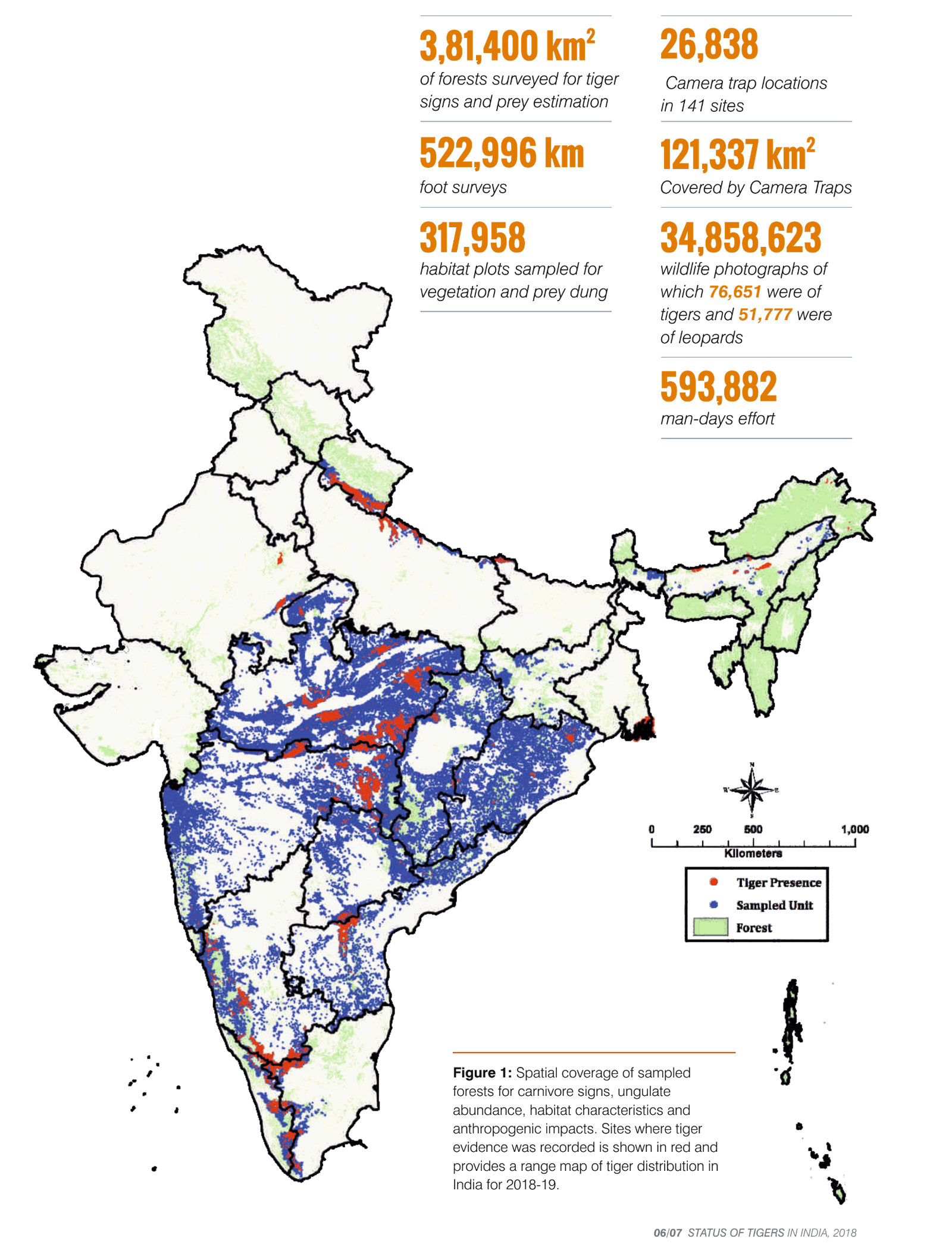
- India’s five tiger landscapes are: Shivalik Hills and Gangetic Plains, Central Indian Landscape and Eastern Ghats, Western Ghats, North-East Hills and Brahmaputra Plains, and the Sundarbans.
|
Tiger population growth in India |
||||
|
State |
2006 |
2010 |
2014 |
2018 |
Shivalik Gangetic Plain |
||||
|
Uttarakhand |
178 |
227 |
340 |
442 |
|
Uttar Pradesh |
109 |
118 |
117 |
173 |
|
Bihar |
10 |
8 |
28 |
31 |
Central Indian Landscape and Eastern Ghats |
||||
|
Andhra Pradesh & Telangana |
95 |
72 |
68 |
48 & 26 |
|
Chhattisgarh |
26 |
26 |
46 |
19 |
|
Madhya Pradesh |
300 |
257 |
308 |
526 |
|
Maharashtra |
103 |
169 |
190 |
312 |
|
Odisha |
45 |
32 |
28 |
28 |
|
Rajasthan |
32 |
36 |
45 |
69 |
|
Jharkhand |
– |
10 |
3 |
5 |
Western Ghats |
||||
|
Karnataka |
290 |
300 |
406 |
524 |
|
Kerala |
46 |
71 |
136 |
190 |
|
Tamil Nadu |
76 |
163 |
229 |
264 |
|
– |
– |
5 |
3 |
|
The Northeast |
||||
|
Assam |
70 |
143 |
167 |
190 |
|
Arunachal Pradesh |
14 |
– |
28 |
29 |
|
Mizoram |
6 |
5 |
3 |
0 |
|
Northern West Bengal |
10 |
– |
3 |
0 |
|
Sundarbans |
– |
70 |
76 |
88 |
|
Total |
1,411 |
1,706 |
2,226 |
2967 |
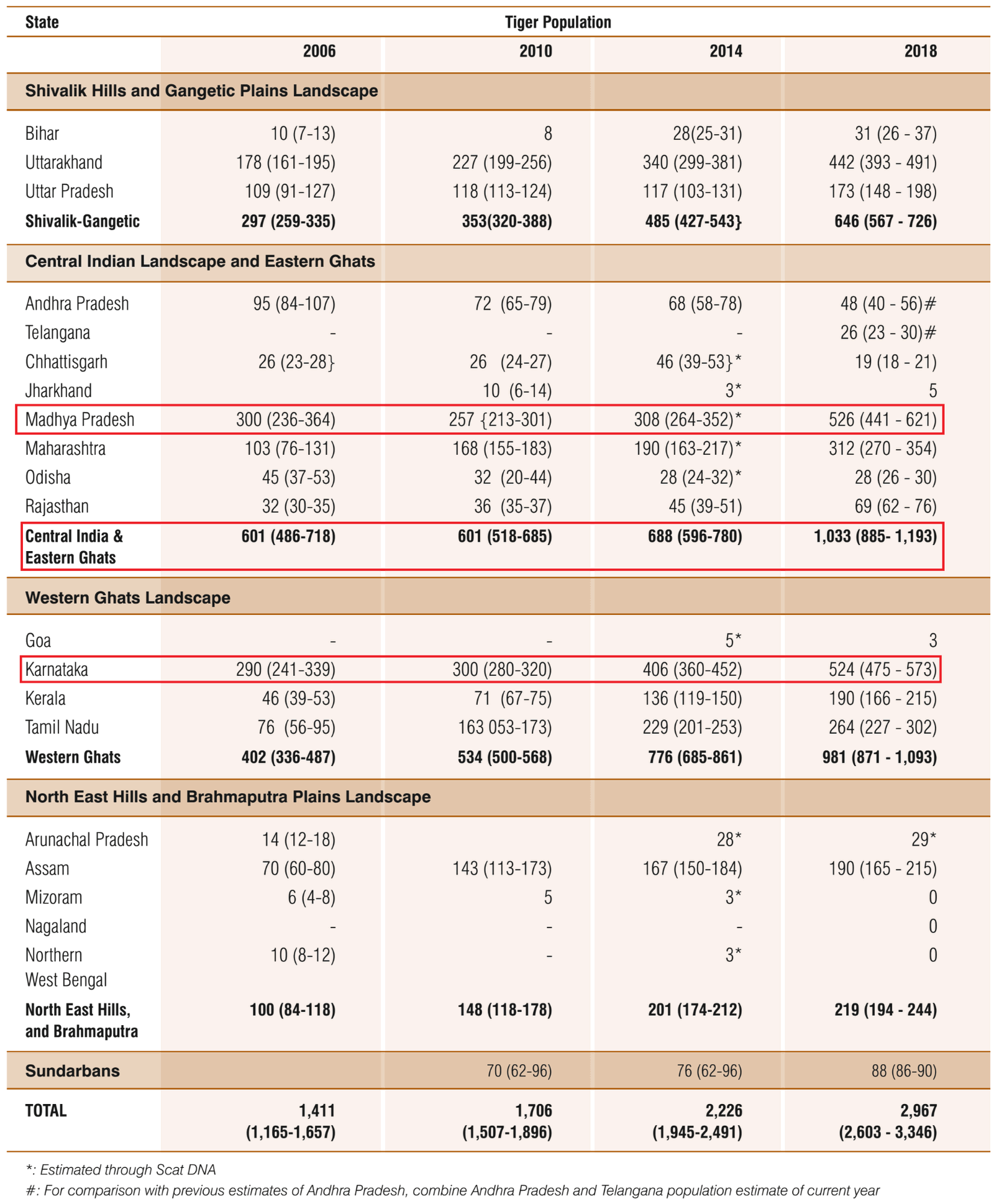
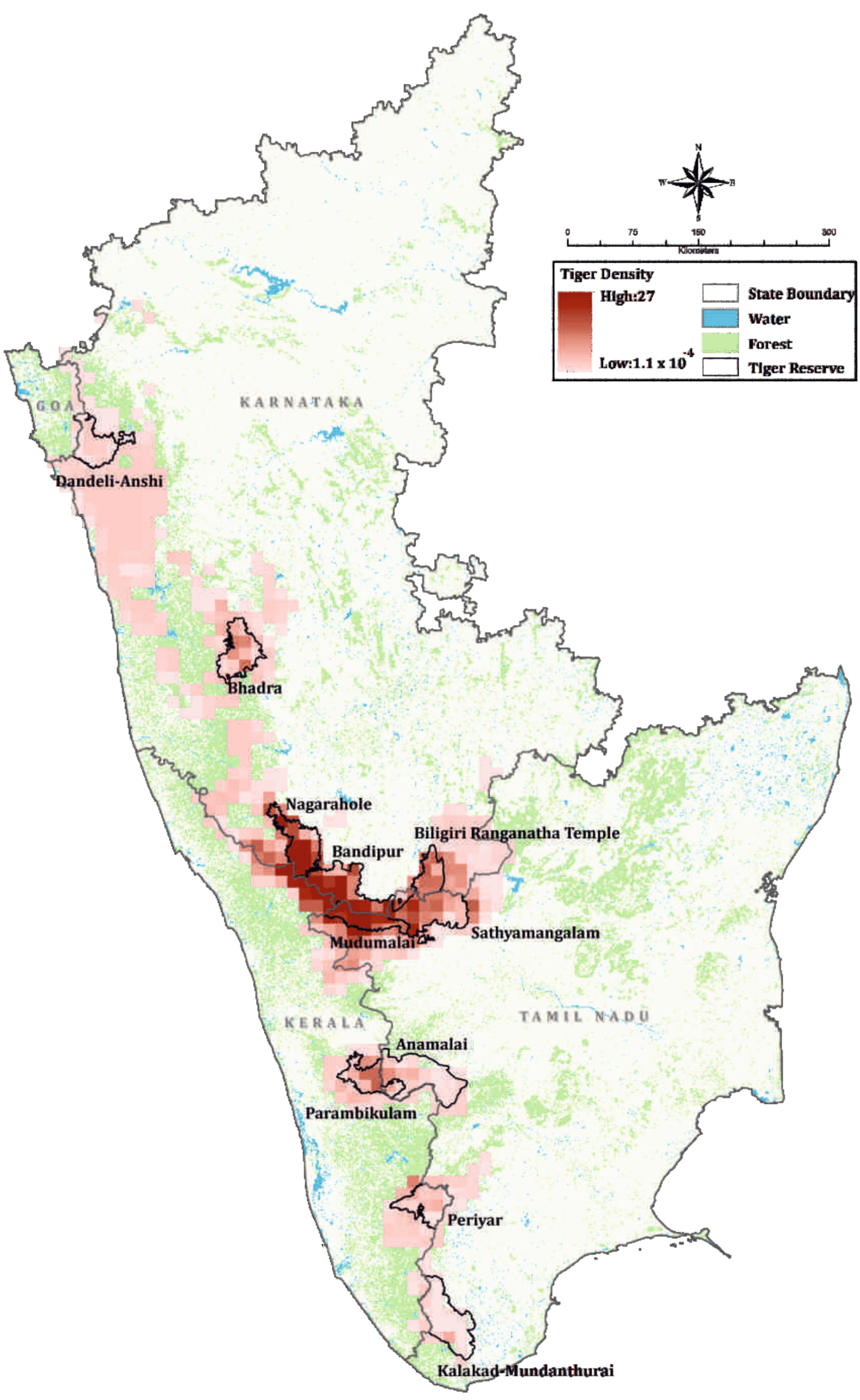
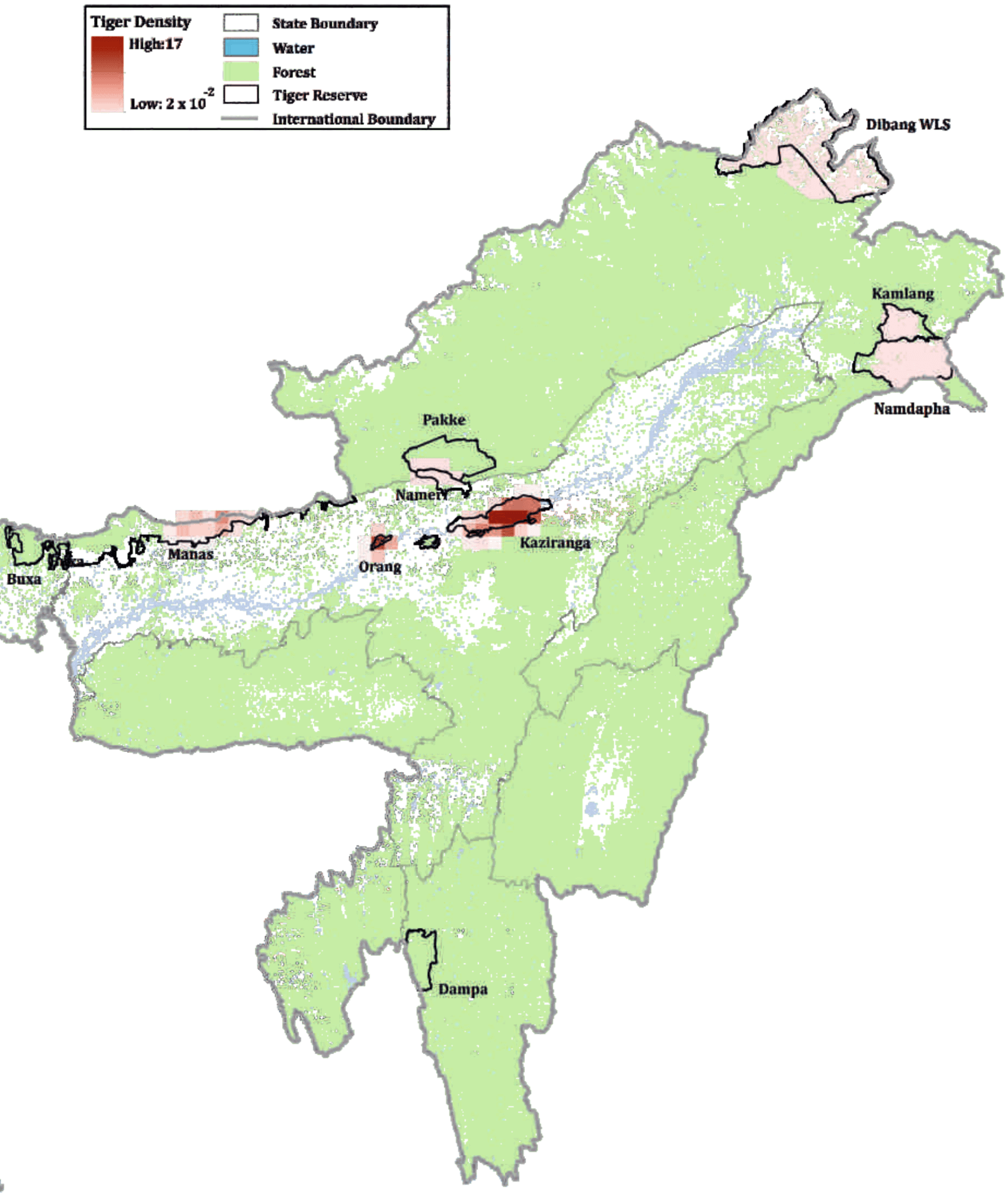
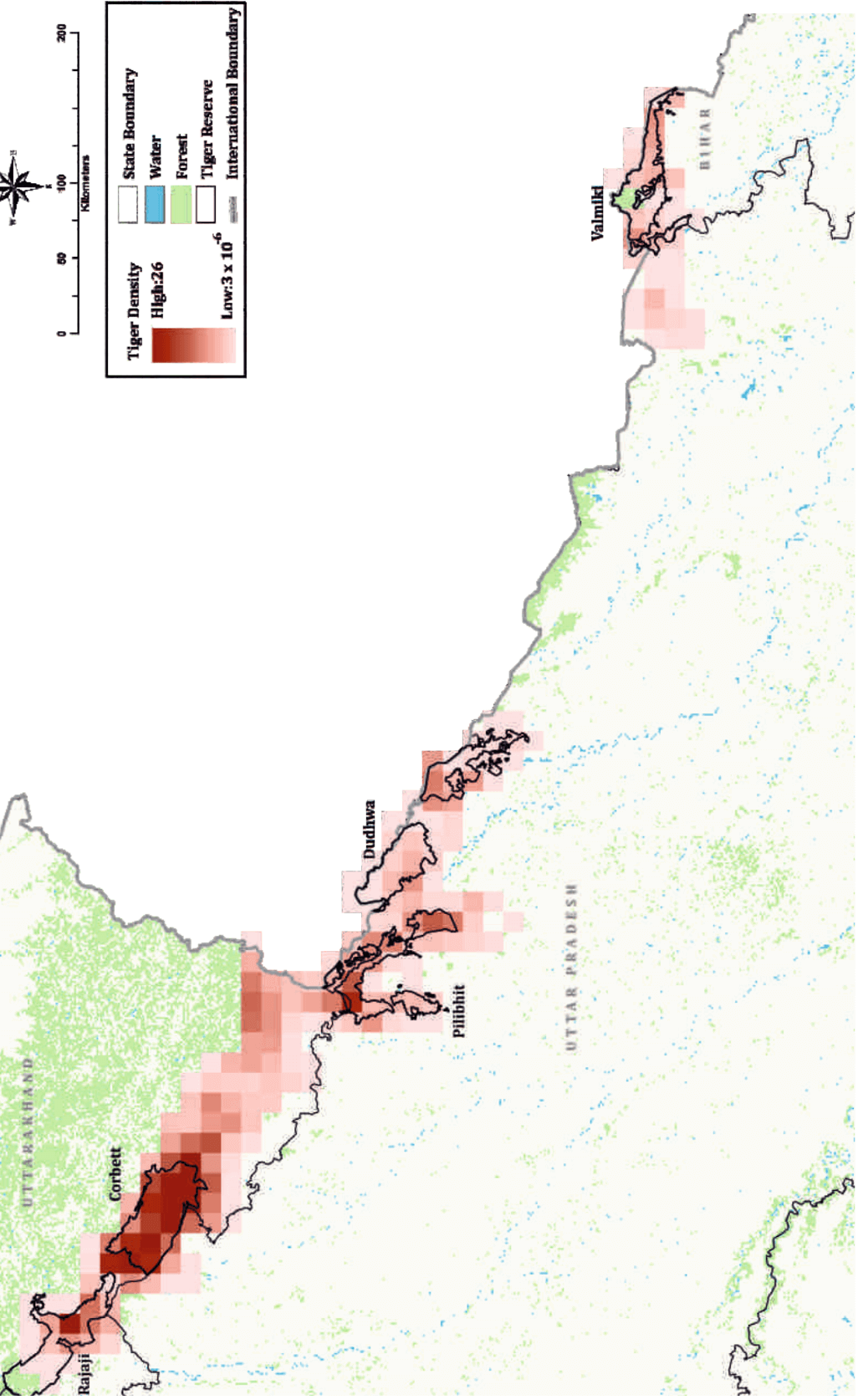
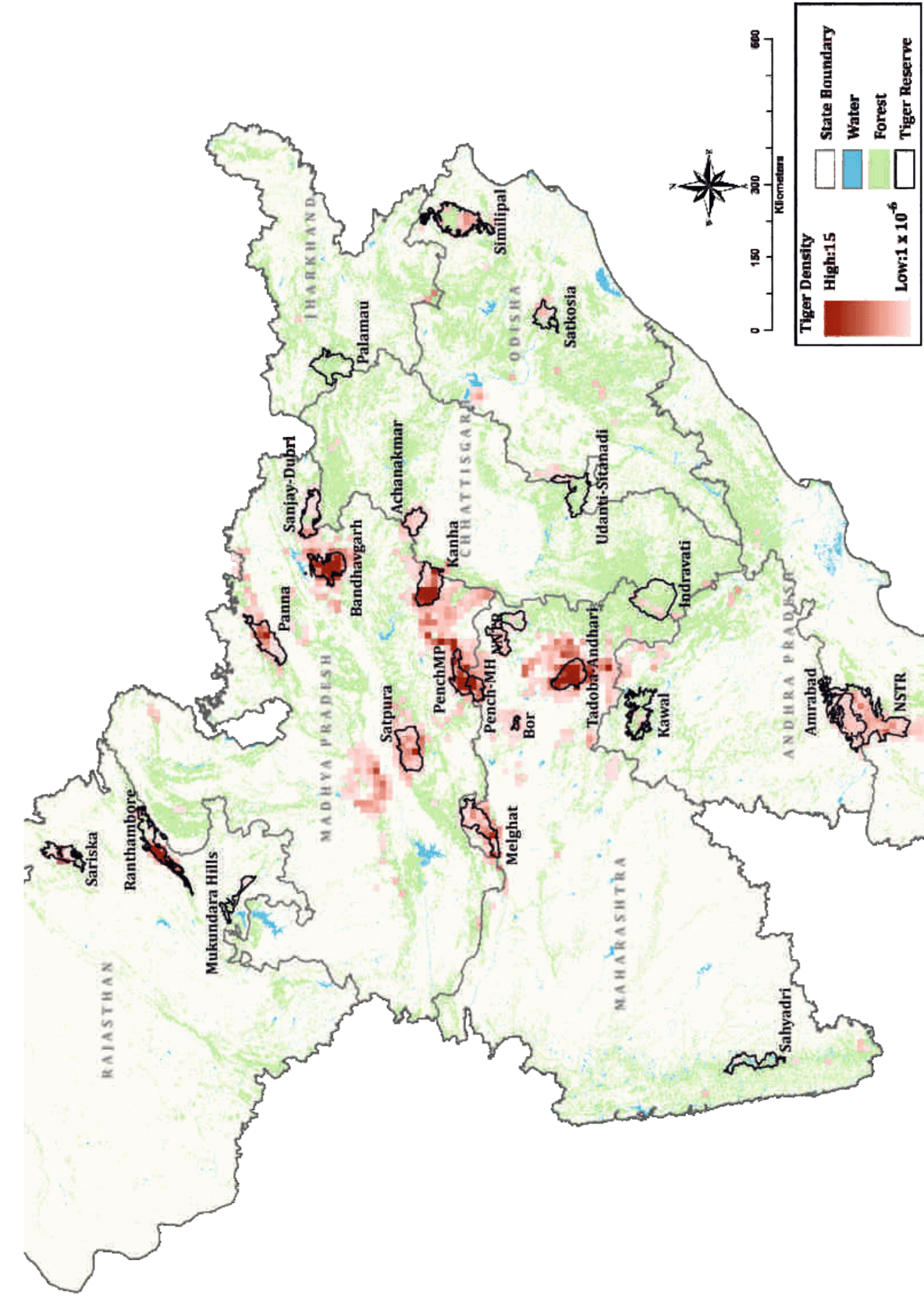
Important Observations from 2018 tiger census
- Madhya Pradesh (526) has the highest tiger population.
- Karnataka (524) has the second highest tiger population.
- Uttarakhand (442) has the third highest tiger population.
- Among the NE states, Assam (190) has the highest tiger population.
- Tiger population fell in Chhattisgarh and Mizoram.
- There is no change in tiger population in Odisha.
|
Region |
Tiger Population (2014 Census) |
| 1. Western Ghats |
776 |
| 2. Central Indian Landscape and Eastern Ghats |
688 |
| 3. Shivalik Gangetic Plain |
485 |
|
India |
2226 |
|
Region |
Tiger Population (2018 Census) |
| 1. Central Indian Landscape and Eastern Ghats |
1033 |
| 2. Western Ghats |
981 |
| 3. Shivalik Gangetic Plain |
646 |
|
India |
2967 |
Other Important observations from All India Tiger Estimation Report 2018
- India is home to almost 70 % of the world tiger population.
- The country has 2,967 tigers, a rise of 33% over the figure found in the previous census of 2014 (2,226).
- This is by far the biggest increase in terms of both numbers and percentage since the capture-mark-recapture method began in 2006.
- The number that year was 1,411; it rose by 295 (21%) to 1,706 in 2010; and by 520 (30%) to 2,226 in 2014.
- The biggest increase has been in Madhya Pradesh — a massive 218 individuals (71%).
- In Maharashtra, the number has gone up from 190 to 312 (64%).
- Uttarakhand has gained over 100 tigers (340 to 442; 30%).
- Chhattisgarh and Mizoram saw a decline in tiger population.
- Jim Corbett has 231 tigers followed by Nagarhole and Bandipore reserves in Karnataka with 127 and 126 tigers respectively.
- Corbett Tiger Reserve (CTR) has reported the highest tiger density among India’s 50 reserves with 14 tigers per 100 sq km
- Sathyamangalam Tiger Reserve in Tamil Nadu registered the “maximum improvement” since 2014.
- In Buxa, Dampa and Palamau, which are tiger reserves, no trace of the animal was found.
- The report does not contain numbers of other predators like leopards.
Measures that led to the increase in tiger population
- Many states deployed special tiger forces to combat organized poachers.
- Relocation of villages away from tiger reserves: ₹10 lakh was provided per family that moved out of critical habitat.
- From 28 in 2006, the number of tiger reserves went up to 50 in 2018.
Concerns remain
- The fast reducing forest cover still presents a threat to the wild cat.
- Under the current green cover, habitats reach tiger-saturation points far too early.
Forests with potential of increasing tiger population
- Sanjay and Guru Ghasidas forests on the border of Madhya Pradesh and Chhattisgarh,
- Kawal and Srirailam forests in Andhra Pradesh and Telangana,
- Simlipal and Satkosia tiger reserves in Odisha,
- Manas reserve in Assam,
- Buxa reserve in West Bengal,
- Palamau reserve in Jharkhand and
- Achanakmar and Indravati tiger reserves in Chhattisgarh.
Last updated on April 15, 2024 5:52 PM


















good content